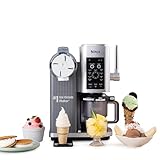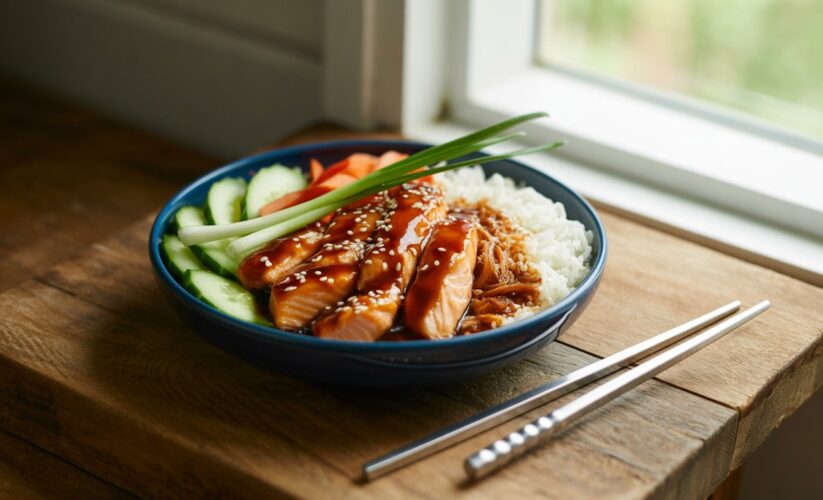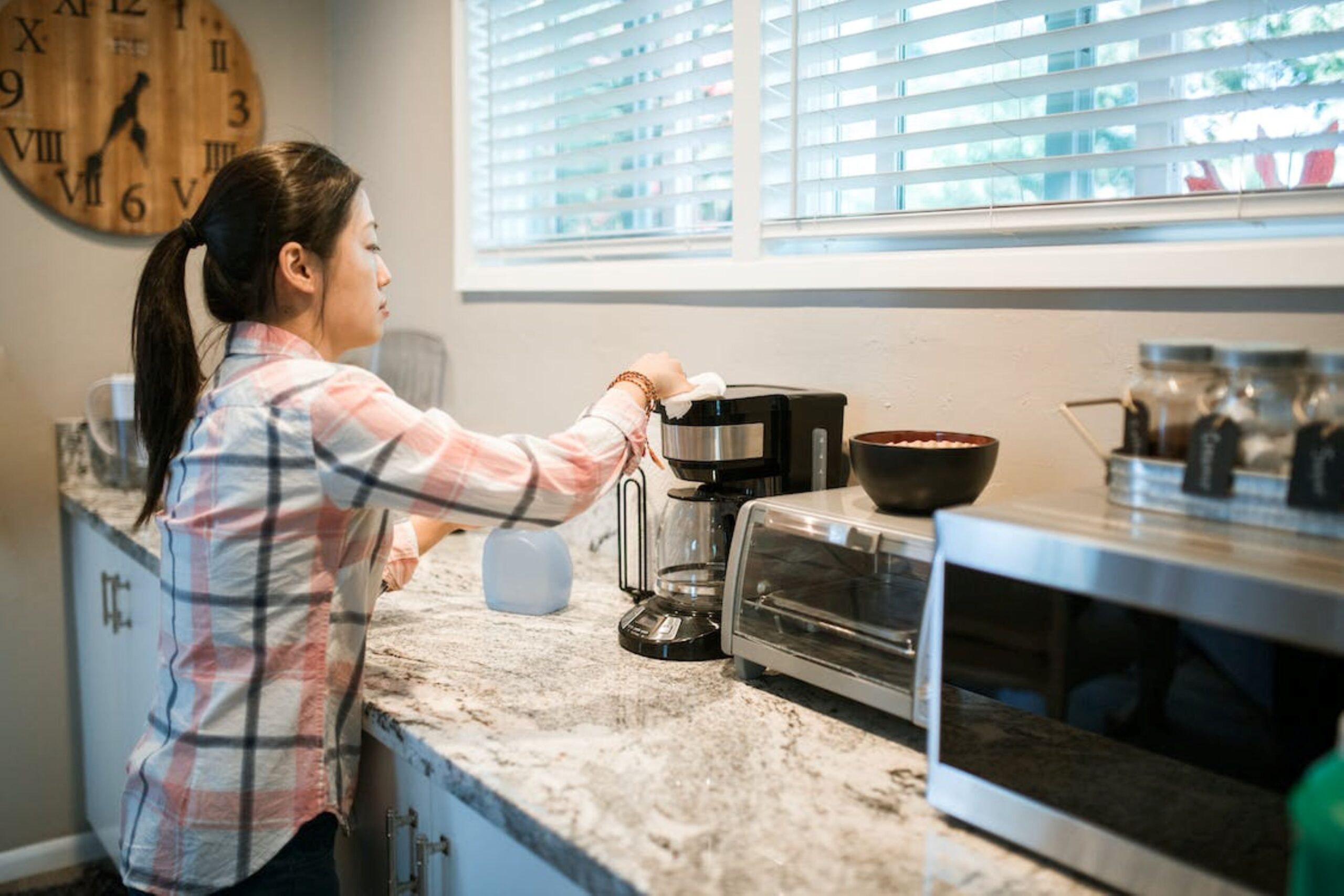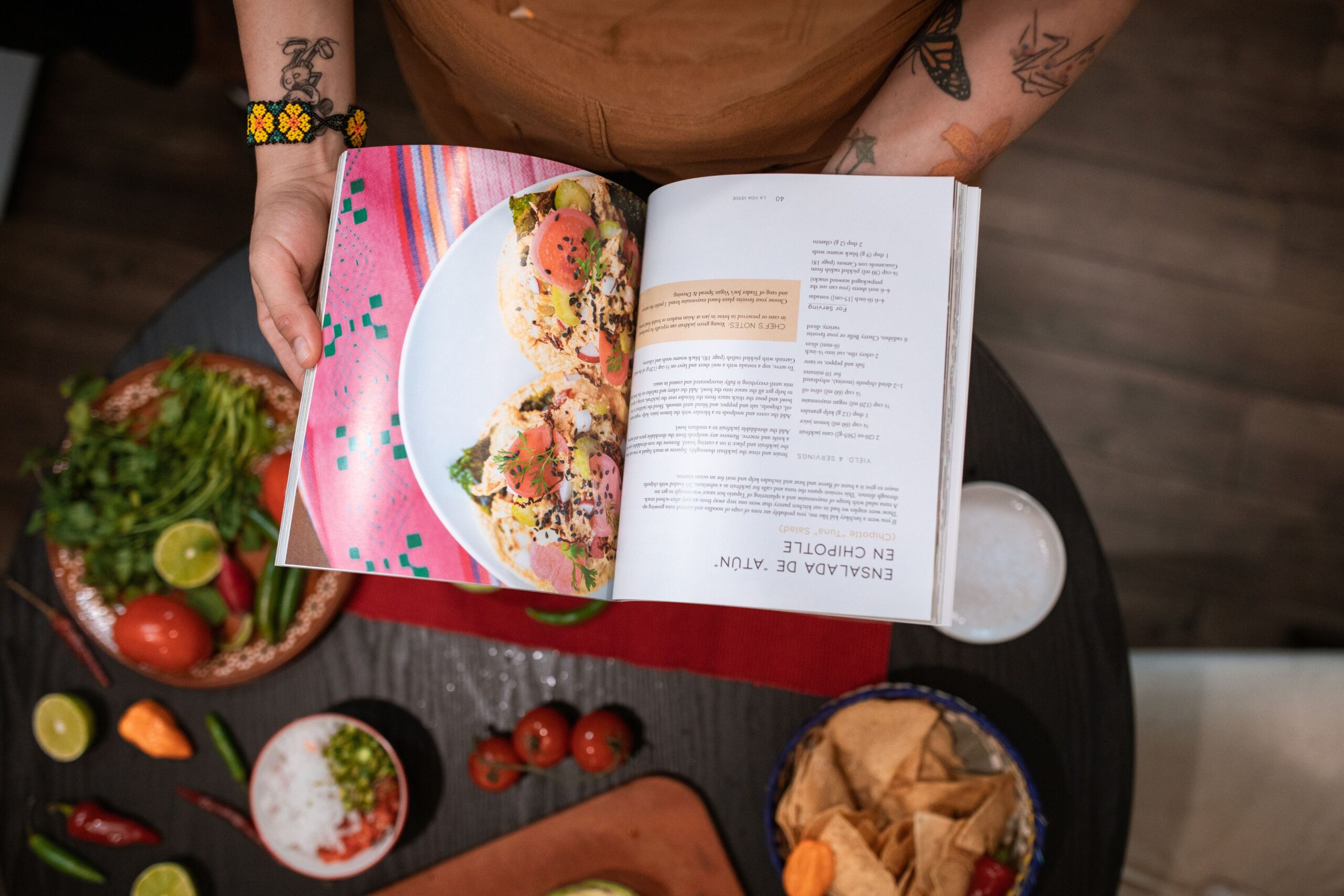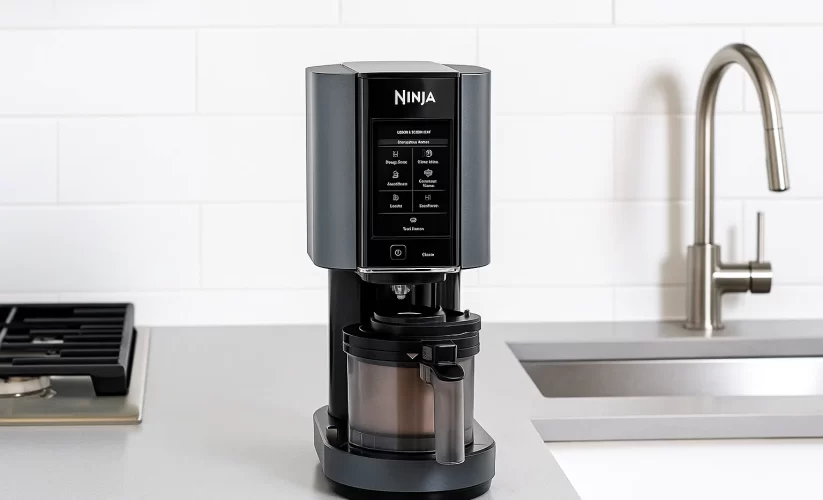
Ninja Creami Icy? Why It Happens & How to Fix It
Nothing ruins the excitement of homemade ice cream quite like opening your Ninja Creami to find an icy, crystalline mess instead of the smooth, creamy dessert you were craving. If you’ve experienced this frustration, you’re not alone. Understanding why your Ninja Creami produces icy results and learning how to prevent it can transform your frozen treat experience from disappointing to delightful.
“The key to perfect frozen desserts isn’t just the machine—it’s understanding the science behind texture and temperature control.”
– Culinary Equipment Magazine
Key Takeaways
- Ice crystal formation is preventable through proper ingredient ratios, with adequate fat content (10-15%) being crucial for smooth texture
- Sugar serves as both sweetener and texture modifier—insufficient sugar leads to large ice crystals, while proper amounts create smoother consistency
- Consistent freezing temperatures are essential—avoid freezer door storage and temperature fluctuations that cause crystal growth
- Processing technique matters—don’t hesitate to use the “Re-spin” function and consider adding small amounts of liquid if texture needs improvement
- Recipe adaptation is often necessary—traditional ice cream recipes may need modifications for optimal Ninja Creami results
- Environmental factors affect outcomes—freezer efficiency, humidity, and equipment condition all impact final texture
- Systematic preparation yields consistent results—develop standardized techniques and keep detailed notes for successful replication
- FUNCTIONALITY: Turn almost anything into ice cream, sorbet, milkshakes, and more..Wattage: 800 watts. Voltage: 120 volts *Source: Circana LLC, Retail Tracking Service, U.S. dollar sales, 52 weeks ending Jan 4 2025 / 52 weeks ending Jan 6 2024/ 52 weeks ending Jan 7 2023 / 52 weeks ending Jan 8 2022 (Ice Cream/Yogurt Makers, Model NC301)
- CUSTOMIZATION: With the Ninja CREAMi, you can have total control of your ingredients from decadent gelato to low sugar, keto, dairy-free, and vegan options. Create frozen treats as unique as you are.
- MIX-INS: Customize your flavor and texture by mixing in your favorite chocolate, nuts, candy, fruit, and more to personalize any CREAMi treat.
- WHAT’S INCLUDED: Motor Base with Dual-Drive Motors, Deluxe Creamerizer Paddle, (4) 24 oz. CREAMi XL Tubs with Storage Lids, Outer Bowl and Lid to house pint while processing, and Recipe Inspiration Guide
- ADDED PROGRAMS: Unlock a variety of CREAMi frozen treats with 5 new programs.
- XL CAPACITY: Family-sized treats for everyone to enjoy. New 24 oz. CREAMi XL Tubs hold 50% more ice cream than the original Ninja CREAMi.
- ADDED PROGRAMS: Unlock a variety of CREAMi frozen treats with 5 new programs.
- XL CAPACITY: Family-sized treats for everyone to enjoy. New 24 oz. CREAMi XL Tubs hold 50% more ice cream than the original Ninja CREAMi.
- DUAL PROCESSING: Use the same base to make two separate mix-in flavors—add candy to the top portion and serve first, then add cookies to the bottom and enjoy later for even more customizable treats.
- SCOOP OR SWIRL: Customize flavors and choose between classic scoops or soft serve outputs. With 13 versatile one-touch programs, there’s a frozen treat for everyone.
- 6 ADDED SOFT SERVE PROGRAMS: Go beyond classic scooped ice cream with Soft Serve, Fruit Whip, Frozen Custard, CreamiFit, Swirled Frozen Yogurt and Lite Ice Cream.
- CUSTOMIZATION: Create customizable treats as unique as you are. Control ingredients for low sugar, dairy-free, lower calorie, nut-free, high protein, and vegan options. Own your flavor, own your way – One Machine Fits All.
Understanding the Ice Crystal Problem
The formation of large ice crystals in frozen desserts is a common challenge that affects texture, taste, and overall enjoyment. When your Ninja Creami creates icy results, it’s typically due to several interconnected factors that disrupt the smooth freezing process.
Ice crystals form when water molecules in your mixture freeze too slowly or unevenly. Unlike commercial ice cream makers that churn continuously during the freezing process, the Ninja Creami works differently—it freezes first, then processes. This unique method, while convenient, can sometimes lead to texture issues if certain conditions aren’t met.
The Science Behind Smooth Texture
Creating smooth, creamy frozen desserts requires controlling three critical elements: fat content, sugar content, and freezing conditions. Each plays a vital role in preventing large ice crystal formation and achieving that perfect scoopable consistency.
Fat acts as a natural emulsifier, coating ice crystals and preventing them from growing too large. Sugar lowers the freezing point of your mixture, creating a softer texture and inhibiting crystal growth. Proper freezing conditions ensure even temperature distribution throughout your mixture.
Common Causes of Icy Ninja Creami Results
Insufficient Fat Content
One of the primary culprits behind icy frozen desserts is inadequate fat content in your base mixture. Many health-conscious recipes reduce or eliminate heavy cream, but fat serves a crucial structural purpose beyond just richness.
When recipes rely heavily on water-based ingredients like fruit juices or low-fat milk alternatives, the higher water content creates more opportunities for large ice crystal formation. The mixture lacks the protective coating that fats provide, resulting in a grainy, icy texture that’s far from the smooth consistency you’re seeking.
Improper Sugar Balance
Sugar isn’t just for sweetness—it’s a texture modifier that significantly impacts your frozen dessert’s final consistency. Too little sugar allows water to freeze into large, hard crystals. Too much sugar can prevent proper freezing altogether, leaving you with a slushy mess.
The type of sugar also matters. Simple sugars like regular granulated sugar dissolve easily but may not provide enough texture modification. Complex sugars and sugar alcohols can offer better texture control but require different ratios and handling techniques.
Temperature Fluctuations During Freezing
Your freezer’s performance directly impacts your Ninja Creami results. Temperature fluctuations during the initial freezing period can cause ice crystals to melt and refreeze repeatedly, growing larger each time.
Opening your freezer frequently, power outages, or an overloaded freezer can all contribute to temperature instability. Even brief temperature changes can significantly impact your final texture, turning what should be smooth ice cream into an icy disappointment.
Freezing Time Issues
Both over-freezing and under-freezing can create texture problems. Under-frozen mixtures may contain liquid pockets that create ice chunks during processing. Over-frozen mixtures become too hard for the Ninja Creami to process effectively, leading to uneven texture distribution.
The standard 24-hour freezing time works for most recipes, but variations in mixture composition, container size, and freezer efficiency may require adjustments. Understanding your specific setup helps optimize freezing times for consistently smooth results.
Proven Solutions for Perfect Texture
Optimizing Your Base Recipe
Creating the perfect base mixture requires balancing multiple components to achieve smooth, creamy results. Start with recipes that include adequate fat content—typically 10-15% of your total mixture. This can come from heavy cream, full-fat coconut milk, or even egg yolks in custard-based recipes.
Consider adding stabilizers like corn starch, xanthan gum, or even a small amount of alcohol to improve texture. These ingredients help prevent ice crystal formation and create a more professional-quality result. A tablespoon of corn starch or a teaspoon of vanilla extract (which contains alcohol) can make a significant difference.
Proper Freezing Techniques
Ensure your mixture reaches the correct consistency before processing. It should be solid throughout but not rock-hard. If you can easily press your finger into the surface leaving a small indentation, it’s typically ready for processing.
Use shallow, wide containers when possible to promote even freezing. Avoid deep, narrow containers that may freeze unevenly. Cover your mixture tightly to prevent freezer burn and moisture loss, which can contribute to crystallization.
Processing Tips for Better Results
When your mixture is properly frozen, process it according to your Ninja Creami’s instructions, but don’t be afraid to use the “Re-spin” function if needed. Sometimes a second processing cycle helps achieve the perfect texture, especially with recipes that have challenging ingredient ratios.
If your result is still too icy after processing, try the “Mix-in” function with a small amount of liquid (cream, milk, or even a tablespoon of melted ice cream) to help smooth out the texture. This additional moisture, combined with processing, can help break down remaining ice crystals.
Storage and Serving Strategies
Proper storage after processing is crucial for maintaining texture. Store your finished dessert in an airtight container in the coldest part of your freezer. Avoid storing it in the freezer door where temperature fluctuations are most common.
Before serving, let your frozen dessert soften slightly at room temperature for 5-10 minutes. This brief tempering period makes scooping easier and allows the flavors to develop fully. If it becomes too soft, a quick 10-15 minute return to the freezer usually restores the perfect consistency.
Advanced Troubleshooting Techniques
Ingredient Modifications
If you consistently experience icy results with certain recipes, consider modifying the ingredient ratios. Increase fat content gradually by substituting some milk with cream or adding egg yolks for richness and stability. Adjust sugar levels carefully—increasing by small amounts (1-2 tablespoons) until you achieve better texture.
For fruit-based desserts, which are notoriously prone to iciness due to high water content, try cooking the fruit first to reduce moisture, or blend it with yogurt or cream cheese for added fat and protein content.
Environmental Considerations
Your kitchen environment and equipment condition affect results. Older freezers may not maintain consistent temperatures, requiring longer freezing times or different storage strategies. High-humidity environments can introduce moisture that affects texture.
Consider the age and condition of your Ninja Creami. Over time, the processing blades may become less effective, requiring more frequent re-spinning or different processing techniques to achieve smooth results.
Recipe Adaptation Strategies
Not every recipe translates perfectly to the Ninja Creami format. Traditional ice cream recipes designed for continuous-churn machines may need modifications. Reduce liquid content slightly, increase fat content, and consider adding stabilizers designed for still-freeze methods.
Experiment with base recipes that have proven successful, then gradually modify them to achieve your desired flavors while maintaining the texture principles that prevent iciness.
Preventing Future Ice Crystal Problems
Consistency in Preparation
Develop a systematic approach to your frozen dessert preparation. Use the same containers, follow consistent timing, and maintain detailed notes about what works for your specific setup. Small variations in technique can lead to dramatically different results.
Measure ingredients accurately, especially fats and sugars that directly impact texture. Consider investing in a kitchen scale for more precise measurements, particularly when adapting recipes or creating your own formulations.
Equipment Maintenance
Keep your Ninja Creami and accessories clean and in good working condition. Residue buildup can affect processing efficiency. Ensure your freezer maintains consistent temperatures and isn’t overloaded, which can affect air circulation and even freezing.
Regularly check that your Ninja Creami containers seal properly and aren’t cracked or damaged. Even small imperfections can allow moisture to enter during freezing, affecting final texture.
Understanding Your Preferences
Different people prefer different textures in their frozen desserts. Some enjoy a slightly firmer consistency, while others prefer ultra-smooth, soft-serve-like results. Adjust your techniques based on your personal preferences rather than trying to achieve an arbitrary standard.
Keep notes about successful recipes and techniques. What works for one type of dessert may not work for another, and understanding these patterns helps you troubleshoot problems more effectively.
The Impact of Perfect Texture
Achieving consistently smooth, non-icy results from your Ninja Creami transforms your relationship with homemade frozen desserts. Instead of viewing it as an unpredictable experiment, you’ll develop confidence in creating restaurant-quality treats at home.
Perfect texture enhances flavor perception, making your desserts taste better even when using the same ingredients. The psychological satisfaction of creating something beautiful and delicious cannot be understated—it encourages continued experimentation and skill development.
The ability to control texture also opens doors to more creative possibilities. Once you master the basics of preventing iciness, you can experiment with unique flavors, dietary modifications, and presentation techniques that weren’t possible when struggling with texture issues.
Conclusion
Conquering icy Ninja Creami results isn’t about finding one magic solution—it’s about understanding the interplay between ingredients, technique, and equipment. By mastering the balance of fats, sugars, and proper freezing conditions, you can consistently create smooth, professional-quality frozen desserts at home.
The journey from frustrating ice crystals to perfect texture requires patience and experimentation, but the rewards are substantial. Each successful batch builds your confidence and understanding, bringing you closer to becoming a frozen dessert expert in your own kitchen.
Remember that even experienced home dessert makers encounter texture challenges occasionally. The key is learning from each experience and gradually refining your technique until creating perfect frozen treats becomes second nature.
Frequently Asked Questions
Q: How long should I freeze my mixture before processing in the Ninja Creami?
A: The standard recommendation is 24 hours, but this can vary based on your mixture’s composition and freezer efficiency. The mixture should be solid throughout but not rock-hard. If you can press your finger into the surface leaving a small indentation, it’s typically ready for processing.
Q: Can I fix icy results after processing, or do I need to start over?
A: You can often improve icy texture after processing by using the “Mix-in” function with a small amount of cream or milk (1-2 tablespoons), then re-spinning. If the texture is severely compromised, you may need to let it thaw slightly, remix with additional fat content, and refreeze.
Q: Why do my fruit-based desserts always turn out icy compared to cream-based ones?
A: Fruit has high water content and low fat content, both of which promote ice crystal formation. Try cooking fruit first to reduce moisture, or blend it with yogurt, cream cheese, or coconut cream to add fats and proteins that improve texture.
Q: Is it normal to use the “Re-spin” function, or does this indicate a problem with my recipe?
A: Using “Re-spin” is completely normal and often necessary for optimal texture, especially with challenging ingredients or ratios. Many successful recipes benefit from multiple processing cycles to achieve the smoothest possible consistency.
Q: What’s the best way to store processed desserts to prevent them from becoming icy later?
A: Store in airtight containers in the coldest, most stable part of your freezer (usually the back, not the door). Allow 5-10 minutes of softening at room temperature before serving, and consume within 1-2 weeks for best texture and flavor quality.
Last update on 2025-10-15 / Affiliate links / Images from Amazon Product Advertising API
*We may earn a commission for purchases made using our links. Please see our disclosure to learn more.




